The differences between aluminum plate and aluminum composite panel
What is an aluminum plate ?
l Aluminium sheet is called aluminium plate or sheet with a thickness of 0.2mm or more to 500mm or less, a width of 200mm or more and a length of 16m or less, below 0.2mm for aluminium and within 200mm width for rows or strips (of course, with the progress of big equipment, the widest aluminium sheet can be 600mm is also more).
l Aluminium sheets are rectangular sheets made from aluminium ingots and are divided into pure aluminium sheets, alloy aluminium sheets, thin aluminium sheets, medium thick aluminium sheets and patterned aluminium sheets.

l Aluminium sheets are usually classified according to the following two types.
1. by alloy composition:
|
High purity aluminium sheets (rolled from high purity aluminium with a content of 99.9 or more) |
|
Pure aluminium sheets (made basically from pure aluminium) |
|
Aluminium alloy sheets (made of aluminium and auxiliary alloys, usually aluminium-copper, aluminium-manganese, aluminium-silicon, aluminium-magnesium, etc.) |
|
Composite or welded aluminium sheets (made by combining various materials to produce aluminium sheets for special applications) |
|
Aluminium sheets (aluminium sheets covered with thin aluminium sheets for special applications) |
2. Thickness: (in mm)
|
Item Name |
Thickness |
|
Thin sheet (aluminium sheet) |
0.15-2.0 |
|
Regular sheet |
2.0-6.0 |
|
Medium plate |
6.0-25.0 |
|
Thick plate |
25-200 Extra thick plate 200+ |
l Applications
1、Lighting 2、Solar reflector 3、Construction 4、Interior decoration: ceiling, wall, etc. 5、Furniture, cabinet 6、Elevator 7、Signage, nameplate, luggage 8、Automobile interior and exterior decoration 9、Interior decoration: such as photo frame 10、Household appliances: refrigerator, microwave oven, audio equipment, etc. 11、Aerospace and military, such as China's large aircraft manufacturing, Shenzhou spacecraft series, satellite, etc. 12、Machinery parts processing 13、Machinery parts processing 12、Machinery parts processing 13 12. mechanical parts processing 13. mould making 14. chemical/insulation pipe cladding. 15. high quality shipboard


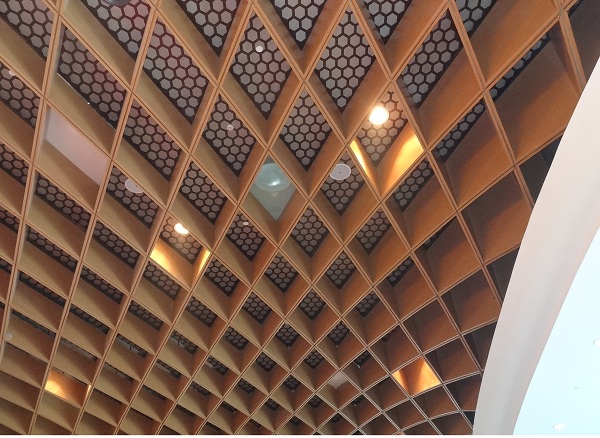
l Classification
In the aluminium alloy, the number is representative of the meaning of the following 7075T651 aluminium plate number as an example. The first 7 indicates the aluminium and aluminium alloy group - aluminium, zinc and magnesium alloy. Aluminium and aluminium alloy groups are divided into nine categories. Among them, 1, 3, 5, 6, 7 series of aluminum, aluminum alloy is the main, other series in the actual use of the chances of using less.
|
First category: |
1 series: pure aluminium for industrial use |
|
Category 2: |
2 series: aluminium-copper alloys |
|
Category 3: |
3 series: aluminium-manganese alloys |
|
Category 4: |
4 series: aluminium-silicon alloys |
|
Category 5: |
5 series: aluminium-magnesium alloys |
|
Class 6: |
Series 6: Al-Mg-Si alloys |
|
Class 7: |
Series 7: Aluminium, zinc, magnesium and copper alloys |
|
Class 8: |
Series 8: Other alloys |
l Specification calculation
Aluminium sheet material. Panzhu is also more available in rows up to 600mm wide). Aluminium bar, diameter: 3-500mm aluminium tube, thickness: 2-500mm under: aluminium tube, aluminium plate, aluminium bar Panzhu theoretical calculation formula. (Note: with the actual weight of the error, the size of the unit for mm) aluminum plate weight (kg) = 0.0000028 × thickness × width × length aluminum tube weight (kg) = 0.00879 × wall thickness × (outside diameter - wall thickness) × length aluminum bar weight formula (kg) = diameter × diameter × length × 0.0000022
l Price
(Ingot price about: 18900 yuan/ton, plus plate processing fee 6000/ton = 24900 yuan/ton) Specific gravity 2.71 * 3mm * aluminum plate price 18 yuan/kg = 146.34 yuan/sq. 2MM * 2.71 * unit price 18 yuan = 97.26 yuan/sq.
l Terminology and production process
1. Brushed aluminium sheet: the manufacturing process of repeatedly scraping lines out of aluminium sheet with sandpaper, the main process of which is divided into 3 parts: de-esterification, sand grinding and washing. In the aluminium drawing process, the special skin technology after the anodic treatment can make the surface of the aluminium sheet produce a skin layer containing the metal component, clearly showing every fine silk trace, thus making the metal matte with a fine hair lustre.
2. Aluminium oxide plate: aluminium plate placed in the corresponding electrolyte (such as sulphuric acid, chromic acid, oxalic acid, etc.) as the anode, under specific conditions and the action of the applied current, electrolysis and the formation of the aluminium plate. The anodized aluminium sheet forms a thin layer of aluminium oxide on the surface, with a thickness of 5-20 microns, while the hard anodized film can be 60-200 microns.
PS aluminum plate (advertising aluminum plate also known as printing zinc plate, newspaper plate): that is, the back has a printed pattern thickness of 025 or 03 material aluminum plate.
3. Mirror aluminum plate: refers to the aluminum plate with a mirror effect on the surface of the plate through rolling and polishing and other methods of processing.
Embossed aluminium plate can also be called aluminium embossed plate: belongs to the basis of the aluminium plate, after calendering processing and in the surface to form a variety of patterns of aluminium products, the application is more widely used, mainly in packaging, construction, curtain wall, etc.
l Chemical composition and properties
Aluminium Al: balance; silicon Si: 0.25; copper Cu: 0.10; magnesium Mg: 2.2 to 2.8; zinc Zn: 0.10; manganese Mn: 0.10; chromium Cr: 0.15 to 0.35; iron Fe: 0.4 0.
Tensile strength (σb): 170 to 305 MPa
Conditional yield strength σ0.2 (MPa) ≥ 65
Modulus of elasticity (E) : 69.3 to 70.7Gpa
Annealing temperature is : 345°C
l Care and maintenance
The specific cleaning steps for aluminium plates are as follows.
1、 First rinse the surface of the plate with plenty of water.
2、 Use a soft cloth soaked with water-diluted detergent to gently wipe the surface of the plate.
3. rinse the surface with plenty of water to wash away the dirt.
4. inspect the surface of the board and clean any areas that have not been cleaned with detergent.
5. Rinse the board with water until all the detergent has been washed off.
Note: Do not wash hot surfaces (at temperatures above 40 °C) as the rapid evaporation of water is harmful to the finish!
A basic rule is: always use a neutral detergent! Do not use strong alkaline detergents such as potassium hydroxide, sodium hydroxide or sodium carbonate, strong acidic detergents, abrasive detergents or lacquer-soluble detergents.
What is an Aluminium composite panels?
l As a new type of decorative material, aluminium composite panels (also known as aluminium composite materials) have been introduced to China from Germany in the late 1980s and early 1990s, and have been rapidly gaining popularity for their economy, variety of colours available, convenient construction methods, excellent processing properties, excellent fire resistance and noble quality.
The unique properties of the acp panel itself determine its wide range of uses: it can be used for building facades, curtain wall panels, renovation of old buildings, indoor wall and ceiling decoration, advertising signs, display stands, purification and dustproofing projects. It is a new type of building decoration material.

l Type of ACM panel
New decorative material
Standard 1
GB/T 17748-2008
Standard 2
GB/T 22412-2008
l In foreign countries, acm acp sheets have various names, some are called Aluminium Composite Panels; some are called Aluminium Composite Materials; the world's first aluminium composite panel sheet was named ALUCOBOND.
ACM Aluminium Composite Panels
It retains the main characteristics of the original materials (metallic aluminium, non-metallic polyethylene plastic) and overcomes the shortcomings of the original materials, thus obtaining many excellent material properties, such as luxury, colourful decorative properties, weather resistance, corrosion resistance, impact resistance, fire resistance, moisture resistance, sound insulation, heat insulation, shock resistance; light weight, easy processing and forming, easy handling and installation, etc. Lightweight, easy to process and shape, easy to handle and install, etc. Therefore, it is widely used in various architectural decorations, such as ceilings, wrapped columns, counters, furniture, telephone booths, lifts, shop fronts, billboards, plant walls, etc. It has become a representative of metal curtain walls among the three major curtain walls (natural stone, glass curtain walls, metal curtain walls). In developed countries, acp panel are also used in the manufacture of buses and fire carriages, sound insulation materials for aircraft and ships, design instrument cases, etc.
l Composition of ACP materials
acp sheet are made up of multiple layers of material, with a high purity aluminium alloy panel at the top and bottom and a non-toxic low density polyethylene (PE) core panel in the middle, with a protective film applied to the front. For outdoor applications the front of the aluminium composite panel is coated with a fluorocarbon resin (PVDF), for indoor applications the front can be coated with a non-fluorocarbon resin.
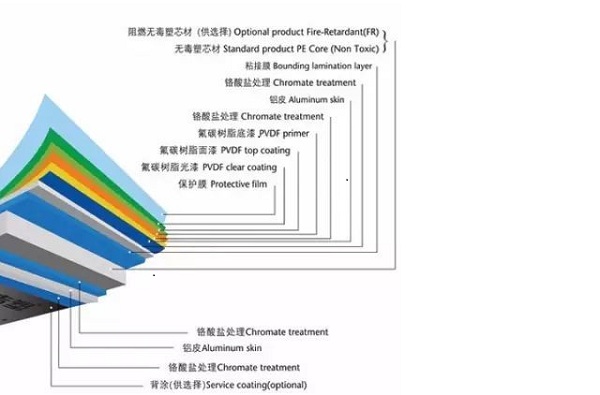
Uses of aluminum composite panel
1、Building facades, curtain wall panels.
2. Retrofitting and renovation of old building facades.
3, Balconies, equipment units, interior partitions.
4, Panels, sign panels, display stands.
5, Interior wall decorative panels, ceilings,.
6、Industrial materials, body of refrigerated vehicles.
7, Air conditioners, TV sets and other appliance shells.

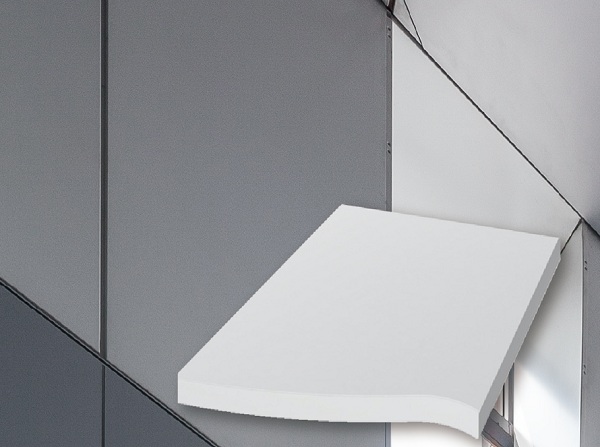
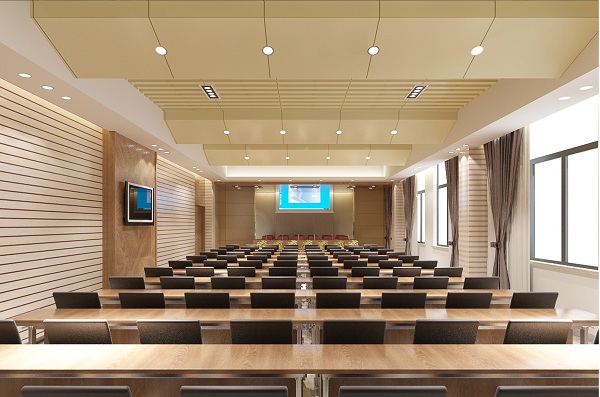
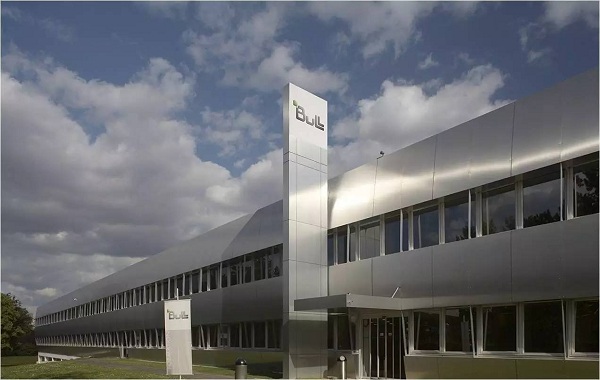
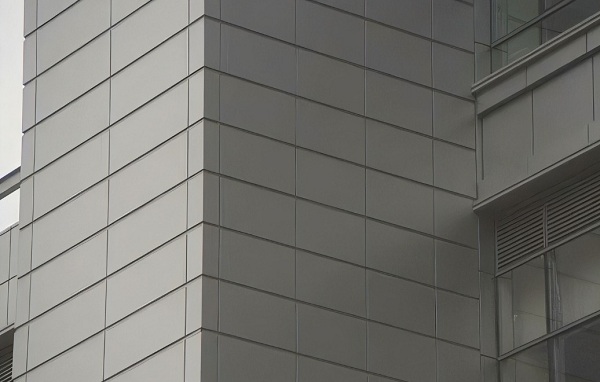
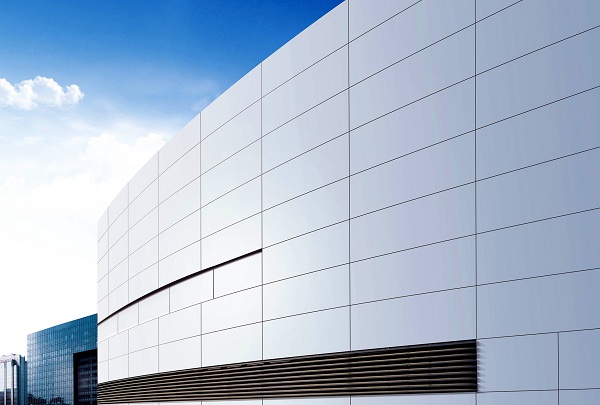

l Performance
1. Superb peel strength
The aluminium composite panel has adopted a new process that has increased the peel strength, the most critical technical indicator of aluminium composite panels, to an excellent state, resulting in a corresponding increase in the flatness and weather resistance of aluminium composite panels.
2. Easy processing of materials
Aluminium composite panels, with a weight of only 3.5-5.5kg per square metre, can reduce the hazards caused by earthquakes and are easy to handle. Its superior construction can be completed with simple carpentry tools to cut, trim, plane the edges and bend into various shapes such as arcs and right angles.
3. Excellent fire performance
The middle of the aluminium composite panel is a PE plastic core of flame retardant material, and the two sides are extremely difficult to burn aluminium layers. Therefore, it is a safe fireproof material and meets the fire resistance needs of the building regulations.
4. Impact resistance
High impact resistance, high toughness, bending without damage to the finish, high impact resistance, and no breakage due to sand and wind in windy areas.
5. Super weather resistance
The use of KYNAR-500-based PVDF fluorocarbon paint has unique advantages in terms of weather resistance, whether in the hot sun or cold wind and snow without loss of beautiful appearance, up to 20 years without fading.
6. Uniformity of coating and variety of colours
The application of chemical treatment and Henkel's film technology allows for uniform adhesion between paint and aluminium composite panels and a wide range of colours, giving you more scope for choice and showing your individuality.
7. Easy maintenance
Aluminium composite panels, in terms of pollution resistance has been significantly improved. Our city pollution is more serious, after a few years of use need to maintain and clean up, because of the good self-cleaning, only need to use neutral detergent and water can be, after cleaning so that the plate permanent as new.
8. Easy processing
Aluminium composite panel is a good material that is easy to process and shape. It is an excellent product for the pursuit of efficiency and time, which can shorten the working period and reduce costs. Aluminium composite panels can be cut, cut, slotted, band-sawed, drilled, processed and countersunk, also cold bent, cold folded, cold rolled, riveted, screwed or glued and bonded.
1、Good weather resistance, high strength, easy maintenance.
2、Construction is convenient and the construction period is short.
3、Excellent processability, thermal break, sound insulation and excellent fire performance.
4、Good plasticity, impact resistance, can reduce the load of the building, good anti-vibration.
5、Good flatness, light and firm.
6、Many colours are available.
7、Simple processing machine, can be processed on site.
8. Customised patterns and designs can be made.


l Classification
There are many different types of sandwich panel, and they are a new type of material, so there is no uniform classification method yet, but they are usually classified according to usage, product function and surface decoration effect.
Classification by application
a. Aluminium composite material for building curtain walls
The minimum thickness of its upper and lower aluminium panels is not less than 0.50mm, and the total thickness should be not less than 4mm. aluminium material should meet the requirements of GB/T 3880, generally to use 3000, 5000 and other series of aluminium alloy plates, and the coating should be fluorocarbon resin coating.
b. Aluminium composite panels for external wall cladding decoration and advertising
The upper and lower aluminium panels are made of rust-proof aluminium with a thickness of not less than 0.20mm, and the total thickness should be not less than 4mm; the coating generally adopts fluorocarbon coating or polyester coating.
c. Aluminium composite panels for indoor use
The upper and lower aluminium panels are generally made of aluminium of a thickness of 0.20mm, with a minimum thickness of not less than 0.10mm and a total thickness of 3mm. the coating is generally polyester or acrylic.
Classification by product function
a. Fire-retardant panels acp
Flame retardant core material is selected, and the product's combustion performance reaches flame-retardant ( grade B1) or non-combustible (grade A ); at the same time, other performance indicators must also meet the technical index requirements of aluminium composite panels.
b. Anti-bacterial and anti-mould aluminium composite panels
Antibacterial and fungicidal coatings are applied to the aluminium composite panels to control the reproduction of microbial activities and ultimately kill bacteria.
c. Anti-static aluminium composite panels
Anti-static aluminium composite panels are coated with anti-static paint, with a surface resistivity below 109Ω, which is lower than that of ordinary aluminium composite panels, making them less susceptible to static electricity and less likely to have dust adhering to their surfaces.
Classification by surface decoration effect
a. Coated decorative aluminium composite panels
A variety of decorative coatings are applied to the surface of aluminium panels acp. Fluorocarbon, polyester and acrylic coatings are commonly used, mainly including metallic, plain, pearlescent and fluorescent colours, which have a decorative effect and are the most common varieties on the market.
b. Oxidation colouring aluminium composite panel
Anodic oxidation is used to treat aluminium panels in time to have chic colours such as rose red and bronze, playing a special decorative effect.
c. Film decorative composite panels
That is, the coloured film according to the set process conditions, relying on the role of adhesives, so that the coloured film adhesives in the primer coated aluminium plate or directly affixed to the degreasing treatment of the aluminium plate. The main varieties are post-grain and wood-grain panels, etc.
d. Coloured printed acp sheet fasade panel
Different patterns will be printed on the transfer paper with colour ink through advanced computer phototype printing technology, and then indirectly reproduced on the aluminium composite panel through thermal transfer technology to imitate various natural patterns. It is possible to satisfy the creativity of designers and the individual choice of homeowners.
e. Brushed aluminium composite panels
Brushed aluminium composite panels with a brushed surface are commonly available in gold and silver, giving a different visual experience.
f. Mirrored aluminium composite panels
Aluminium panels with a polished surface, like a mirror.
Construction techniques
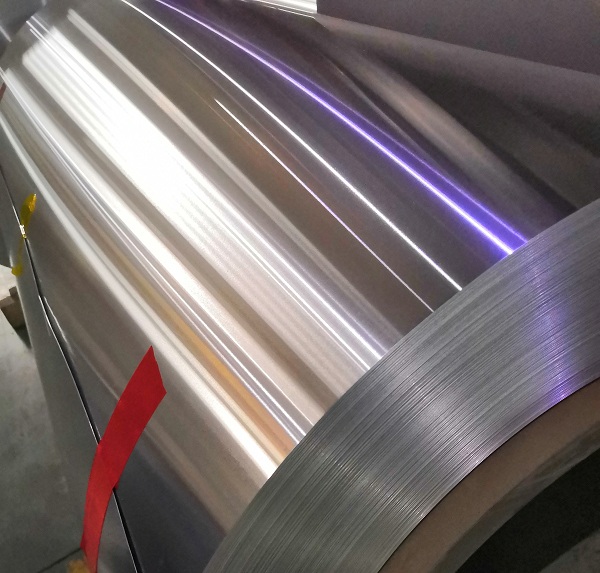
Dry hanging aluminium composite panels construction process
①、Layout work is carried out according to the actual centre line and elevation point of the civil construction; the design of the finish is based on the axis of the building aluminium composite panel skeleton consists of horizontal and vertical pieces, firstly, the position line of the vertical pole is popped up, and then the anchorage point of the vertical pole is determined.
②, the installation of fixed connections on the basis of the release line, with welding fixed connections, welding seam rust-proof paint two degrees. The connection is fixed with the pre-buried parts on the main structure by welding, when there is no pre-buried iron parts on the main structure, it can be fixed with the connection iron parts by drilling holes on the main structure and installing expansion bolts.
③, installation of the skeleton with welding methods to install the skeleton, installation at any time to check the elevation, the position of the centre line, and at the same time will be the section of the connection weld to do anti-rust paint treatment, fixed connections to do hidden inspection records including the length of the connection weld, thickness, location buried elevation, number, embedded depth.
④、Installation of aluminium composite panel on the inner frame of the profile, tapping and milling the screw hole position first, fixing the aluminium composite panel finish on the profile steel skeleton piece by piece with rivets; the gap between the panel and the board is 10-15㎜ before injecting the silicone weatherproof sealant; it is strictly forbidden to remove the packing paper before the installation of the aluminium panel, until the completion of the front tearing the packing protection film; construction according to the direction indicated by the arrow of the aluminium composite panel.
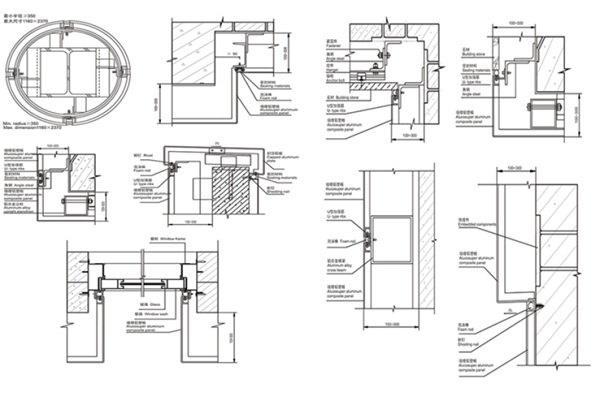
l Quality analysis
1. Discolouration and decolourisation of plastic panels
Discolouration and decolourisation of aluminium composite panels are mainly caused by the improper selection of panels. Aluminium composite panels are divided into indoor panels and outdoor panels, and the surface coating of the two types of panels is different, which determines their application to different occasions. The surface of the panels used indoors is generally coated with resin, which cannot adapt to the harsh natural environment outdoors, and if used outdoors, it will naturally accelerate the ageing process and cause discolouration and decolourisation. The surface coating of outdoor aluminium composite panels is generally made of polyfluorocarbon, which is resistant to ageing and UV rays. Some construction units deceive the owners and use the indoor panels as anti-ageing and anti-corrosion quality fluorocarbon panels to extract unreasonable profits, thus causing serious discolouration and decolouration of the aluminium panels used in the project.
2. Open glue and shedding of plastic panels
Aluminum composite material open glue, shedding, mainly due to improper selection of binder caused. As the ideal binder for outdoor aluminium-plastic panel projects, silicone adhesive has unique and superior conditions. Previously, China's silicone adhesive mainly relies on imports, its price makes many people deterred, only those high-rise buildings on the expensive curtain wall project to dare to ask for. Now, China's Zhengzhou, Guangdong, Hangzhou and other places have put into production different brands of silicone rubber, resulting in a big drop in prices. Now, when buying aluminium composite panels, sellers will recommend the kind of special fast-drying adhesive. This kind of glue can be used indoors, but in the climate change of the outdoor, it will appear the plate open glue, peeling phenomenon.
3. Deformation and bulging of the surface of aluminium composite panels
In any city, it is not difficult to find some deformation and drumming on the surface of aluminium composite panels. This phenomenon is found on small facade decoration projects, and also on large high-rise buildings. Previously in the construction, there have been such quality problems, we had thought that the quality of the plate itself; later, after we focus on the analysis only to find that the main problem in the paste aluminium composite panel of the grass-roots plate, followed by the quality of the aluminium composite panel itself. Dealers often provide us with the construction process of aluminium composite panels, and the recommended base material is mainly high-density board, woodworking board and so on. In fact, the service life of such materials is very fragile when used outdoors, and after wind, sun and rain, deformation is bound to occur. Since the base material is deformed, the aluminium composite panel as the surface layer will not be deformed. It can be seen that the ideal outdoor base material should be after rust-proof treatment angle steel, square steel pipe knotted into the skeleton is better. If conditions permit, it would be ideal to use aluminium profiles as the skeleton. This kind of metal material production skeleton, its cost is not much higher than the wood keel, high density board, can really ensure the quality of the project.
4. ACP sheets with neat glue joints
When aluminium composite panels are used to decorate the surface of a building, there is generally a gap of a certain width between the panels. For the sake of aesthetic needs, the gaps are generally filled with black sealant. In order to save time, some builders do not use paper tape to ensure that the gluing is neat and regular, but use the protective film on the surface of the aluminium composite panel as a substitute. As the aluminium composite panel is cut, the protective film will produce different degrees of tearing, so it is impossible to clean up the glue seam neatly by using it as a substitute for the protective tape.
Common quality problems in the aluminium composite panel process and their solutions
There are two main quality problems that often occur with aluminium composite panels, one is the quality of the coating; the other is the quality of the compound. The quality of the coating appears in the pre-treatment and painting and baking process of the aluminium sheet, while the quality of the composite is mainly due to the technical and management problems in the composite process. Some of these problems are affected by a single factor, and some are affected by a variety of factors. The quality problems in the composite process of aluminium composite panels are mainly plate surface blisters, plate surface trap spots, ruffled edges and poor bonding are analysed and discussed below.
Plate surface blistering
The aluminium composite panel surface blister is the core plate extrusion with granular non-fusible material, these non-fusible material average diameter to a certain degree, will be protruding from the surface of the core plate, composite will cause the plate surface blister phenomenon. When we peel off the aluminium plate will find that there are signs of poor bonding around the bulb, the reason for this sign is that the bulb is in the roller press compound, the air around the part of the bulb can not be completely extruded and sandwiched in the middle of the plate layer, the very thin air layer blocked the full adhesion of the plate layer to. These non-melt material may be plastic particles mixed in other impurities, there may be other plastic particles mixed in, the melting point of these plastics is much higher than polyethylene, in the screw barrel can not dissolve and was blocked in the stainless steel wire mesh sheet side, when gathered to a certain extent will cause the extrusion back pressure to rise, so that the top broke the screen together with the extrusion caused by the core plate bubble. If the particle size of the non-melt is too large, it may be stuck in the mouth of the die, so that the surface of the extruded core board forms a deeper mark, which will also cause quality problems on the surface of the board.
For the production of thin plastic plates, the use of multi-layer stainless steel wire mesh for filtration is necessary, for the aluminium-plastic core plate can be used far less than the plate thickness of a certain aperture plate filter will not cause the phenomenon of penetration, generally can solve the problem of blistering.
Plate surface trapped spots
There is a thumbprint-sized collapse on the surface of the aluminium composite panel, and this problem is caused by the stiffening of the polymer film. The polymer film stiffness varies in size and is generally the size of a grain of rice, which is white and is a quality problem for the adhesive layer. These protruding grains in the composite, the air around it as the above bulging phenomenon can not be completely extruded, was wrapped into the board, when the stiff knot heated and dissolved with the board layer bonding, but there is air layer blocking the place doubly directly affected, the formation of trapped spots. Need to eliminate the quality of this material from material procurement and production management.
Ruffles
The ruffled edge is the wave on the edge of the board. This is a common problem, mainly caused by the wave of the edge of the aluminium coil. Aluminium coil wavy is a rolling quality problem, for more serious wavy deformation, even after the finishing process of pulling, bending, school, but also can not be completely solved. In addition, in the baking paint in the aluminium coil heating too fast, such as a into the oven plate temperature immediately rose to a very high temperature, the aluminium plate will be rapidly expanded, this and not heated aluminium plate in the boundary area to form a great contrast, will lead to thermal deformation of the plate, resulting in ruffled edge.
It is difficult to require the absolute flatness of the aluminium coil processing plate, within the technical requirements will not affect the flatness of the aluminium composite plate can be used. In production practice, sometimes the aluminium coil does not seem to have an obvious ruffled edge, but the composite process produces a ruffled edge. Aluminium coil a certain side of the ruffled edge is a serious deformation, for very serious deformation although not cause ruffled edge, but will form a side of the slack phenomenon. The tension control brake device of the unwinding machine on the composite production line is generally installed on one side of it, because the cylinder core of the aluminium coil is not very rigid, even if it is a very flat coil on both sides, there is a slight slack phenomenon in the aluminium sheet spread out on the other side. If one side of a slightly slack aluminium coil happens to be slack side installed in the side without brake, it may cause ruffled edge, and vice versa will not cause ruffled edge. To solve this accidental phenomenon, in the release machine on both sides are installed on the brake device to control is not to lose the effective way.
In short, the formation of the ruffled edge is mainly a problem of aluminum coil, the serious deformation of aluminum coil can only do scrap processing, but for less serious deformation can be eliminated by increasing the tension. Some composite line has two traction machine, in this case to pay special attention to the speed ratio between the two traction machine relationship, that is, to adjust the tension of this section of the plate, small will also cause the ruffled edge.
Poor bonding
Poor bonding or even acp debonding, which is a very worrying problem in the production of aluminium composite panels. There are many factors causing this problem, both in equipment and in operation. Cold shrinkage deformation of the core board and deformation of the aluminium coil, as well as smoke pollution of the aluminium surface in the baking paint, can cause poor bonding. When the plastic contains opening agents, toner and other low molecular chemical additives, the bonding force of the adhesive layer will also be slowly damaged, the phenomenon of debonding. Therefore, for the bonding phenomenon, we need to analyse the specific problems and find out the symptoms to solve.
l You may also want to know:
|
Coating |
PE / PVDF/ FEVE/ NANO |
|
Core |
LDPE/Fireproof |
|
Length |
Customized |
|
Color |
Solid / Metallic / Marble / Wooden / Brush / Glossy/ Mirror, custom |
|
MOQ |
600 SQM each size per color |
|
Brand / OEM |
DERACP or Customized |
|
Delivery |
15 day after deposit received and color confirmed |
|
Payment Terms |
T/T / L/C / Western Union / Paypal |
|
Packing |
Wooden Package or bulk loading |
l About DERACP
DERACP found in 2000 ,we are specialized in manufacturing building materials, such as Aluminum Corrugated Composite Panel (ACCP) , Aluminum Composite Panel (ACP) ,Color coated Aluminum Coil etc.The factory located in Wenzhou, Zhejiang Province, China, all transportation options are convenience to the factory.It's easy to get to the airport and port. Our factory covers an area of 15,000 square meters , the warehouse covers an area of 5000 square meters and has six production lines. We have the best aluminum leather suppliers and adhesive suppliers .
We currently have over 300 employees including 8 engineers, all of them are participate in the composite materials development more than 10 years . Our factory is ISO9001:2008 certified in quality management systems, ISO14001 :2004 certified in environmental management systems and SAS 18001 certified for Occupational Health and Safety and BSCI(Business Social Compliance Initiative) certified. Our products also have passed SGS, CE(attestation of European Union), and CTC(China Building Material Certification).
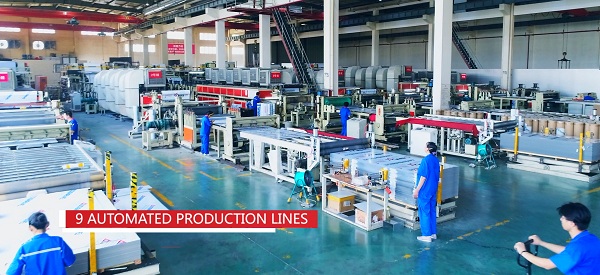
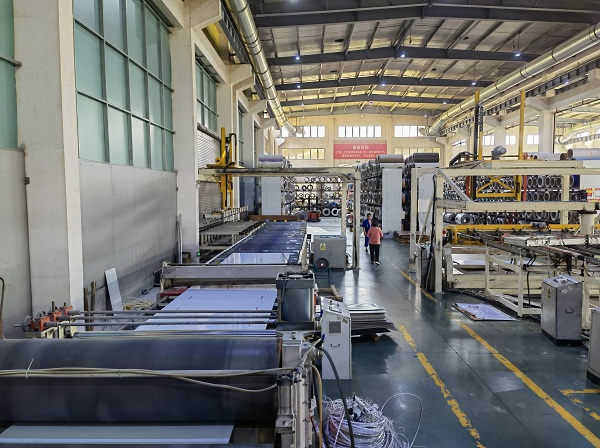
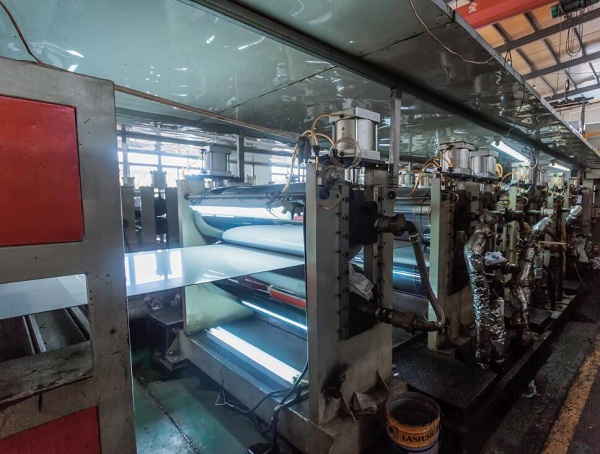
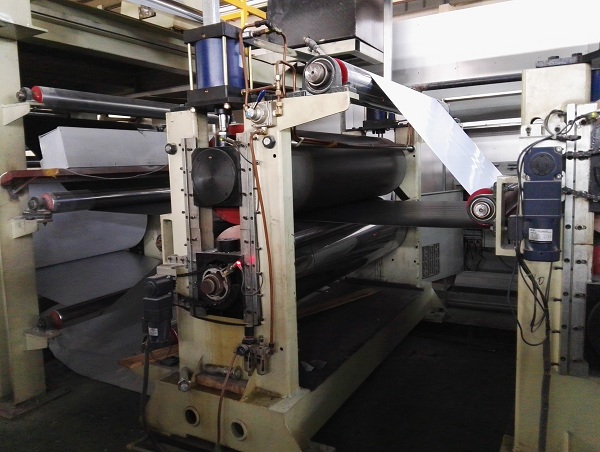
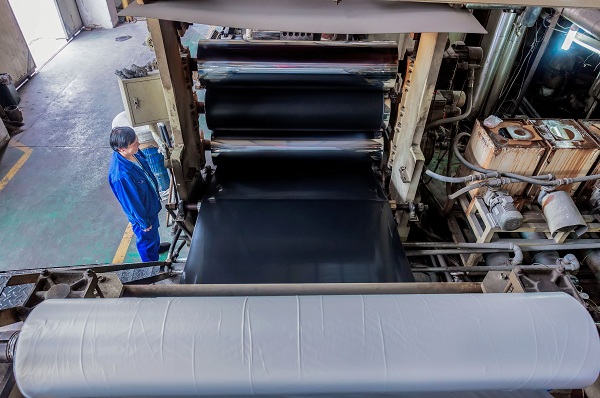
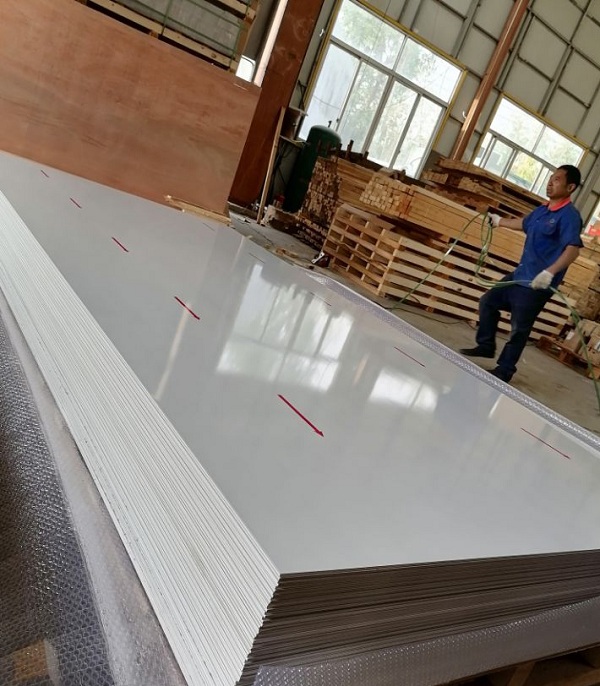
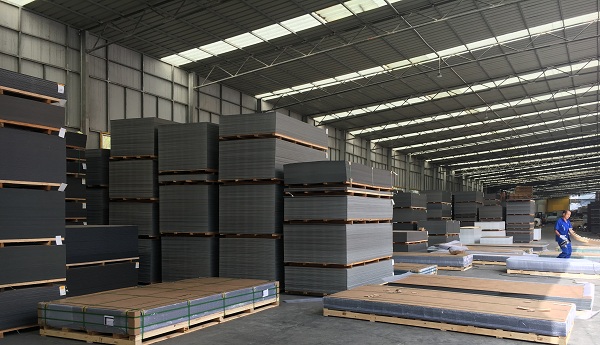

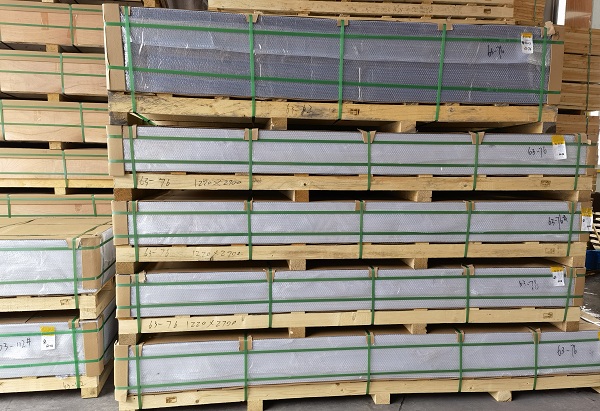
If you have any questions, contact me, please.
Contact: Kerry zhu
Whatsapp & WeChat : +86 130 4067 0248
Email : kerry@der-acp.com
You'll get my response within 24 hours.
Aluminum composite panel is a new type of building decoration material with the advantages of light quality, good stiffness, smooth surface, rich and colorful, convenient construction, etc. It is widely used in curtain wall, indoor and outdoor decoration and advertising signage, etc. It is an important decoration material reflecting modern architecture and decoration style.
Aluminum composite panel is a new type of building decoration material with the advantages of light quality, good stiffness, smooth surface, rich and colorful, convenient construction, etc. It is widely used in curtain wall, indoor and outdoor decoration and advertising signage, etc. It is an important decoration material reflecting modern architecture and decoration style.
Aluminium is the main base material in aluminium composite panels. From the point of view of use, aluminium plays a role in strengthening the support of the aluminium composite panel and is in contact with the surrounding environment through the coating. Therefore, the choice of aluminium has a great influence on the quality of the aluminium composite panel.
Aluminum composite panel is a new type of building decoration material with the advantages of light quality, good stiffness, smooth surface, rich and colorful, convenient construction, etc. It is widely used in curtain wall, indoor and outdoor decoration and advertising signage, etc. It is an important decoration material reflecting modern architecture and decoration style.
Aluminum composite panel is made of multi-layer materials, the upper and lower layer is high purity aluminum alloy panel, the middle is non-toxic low density polyethylene (PE) core panel, and its front side is also pasted with a protective film. For outdoor, the front side of the aluminum composite panel is coated with fluorocarbon resin (PVDF), and for indoor, the front side can be coated with non-fluorocarbon resin.